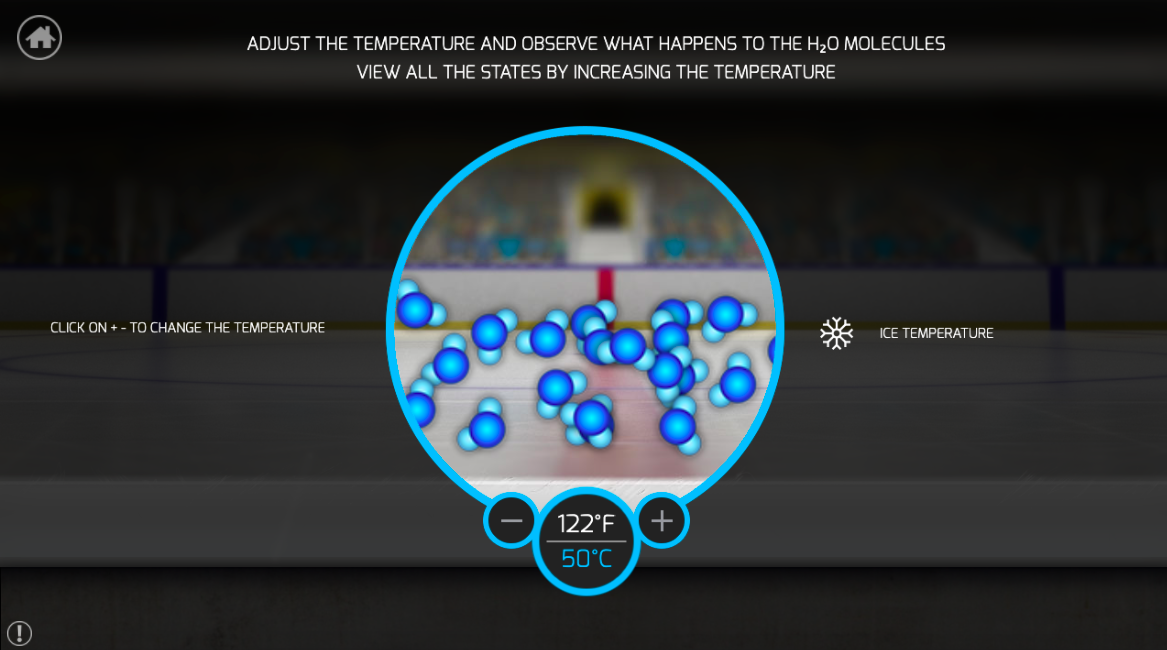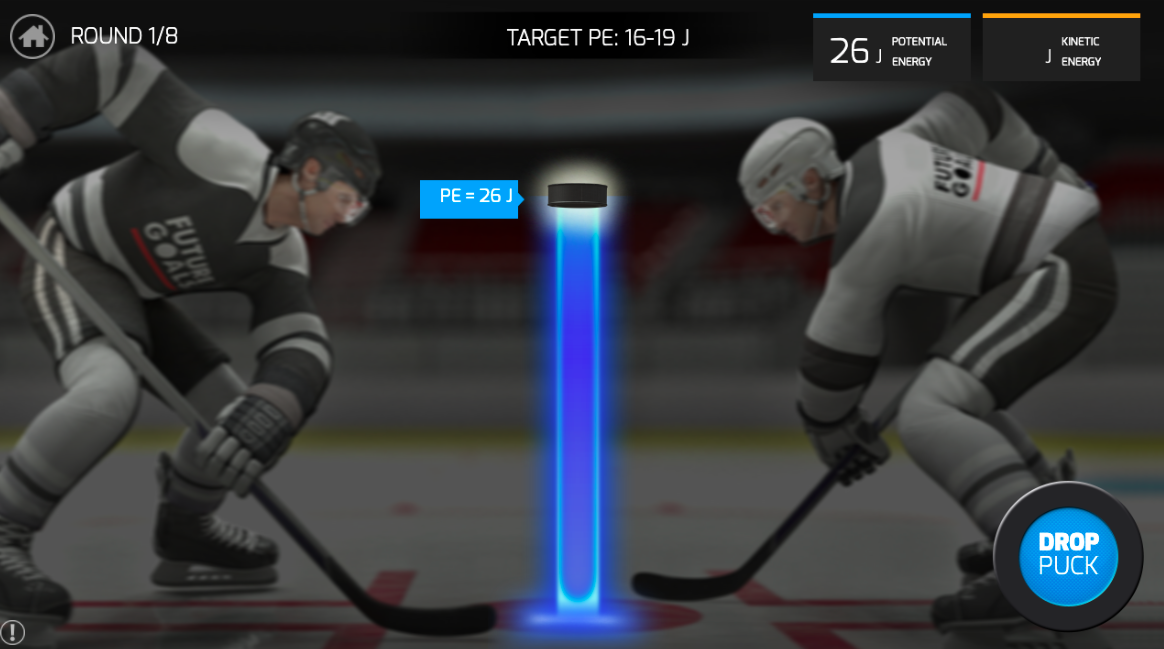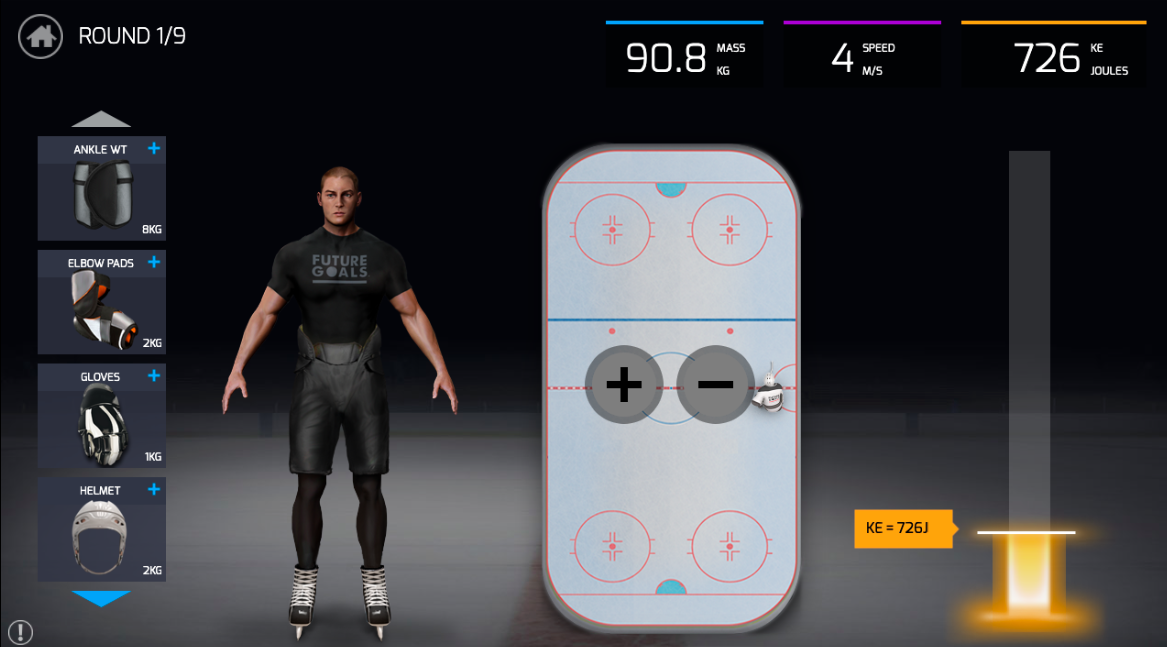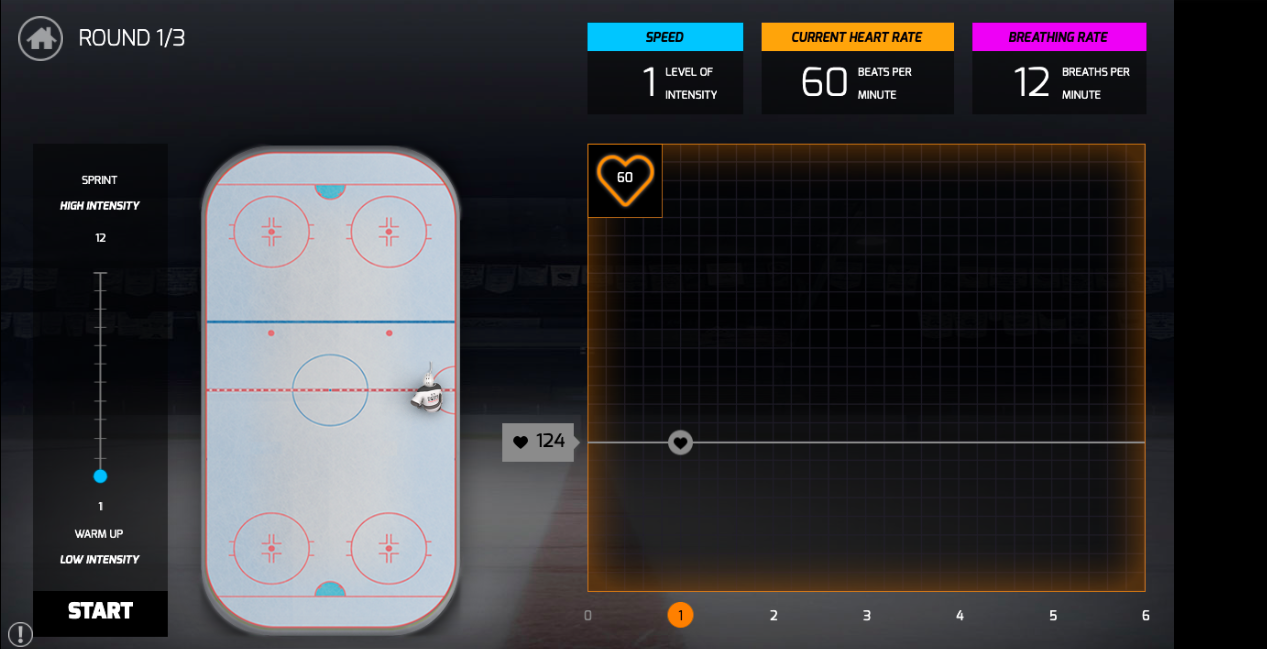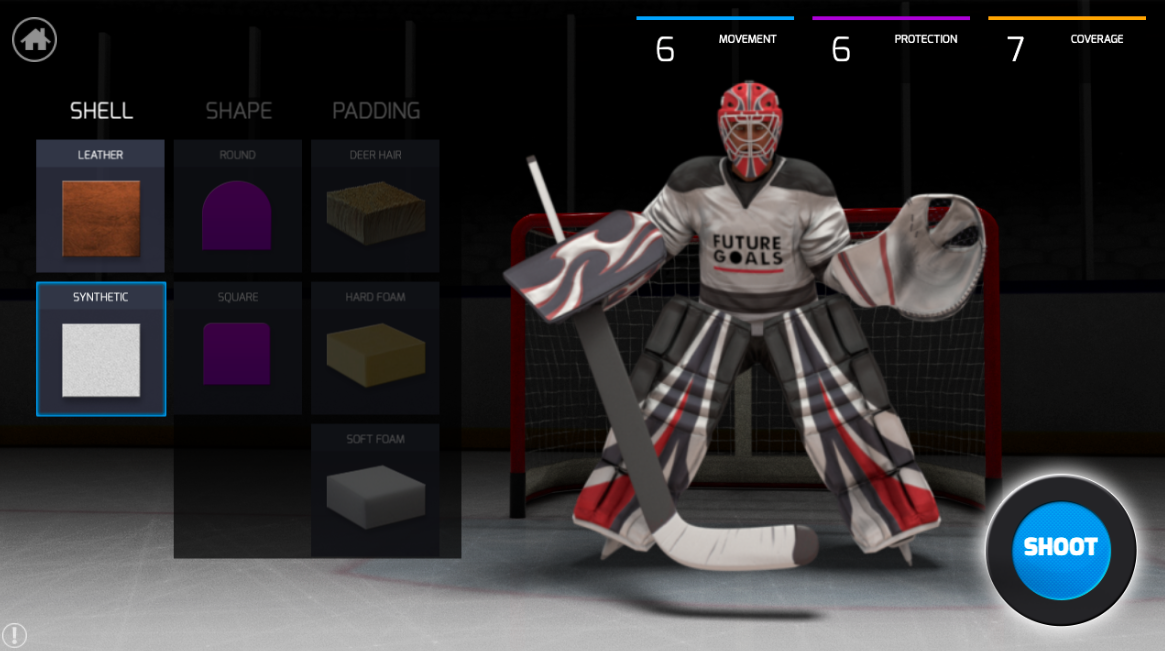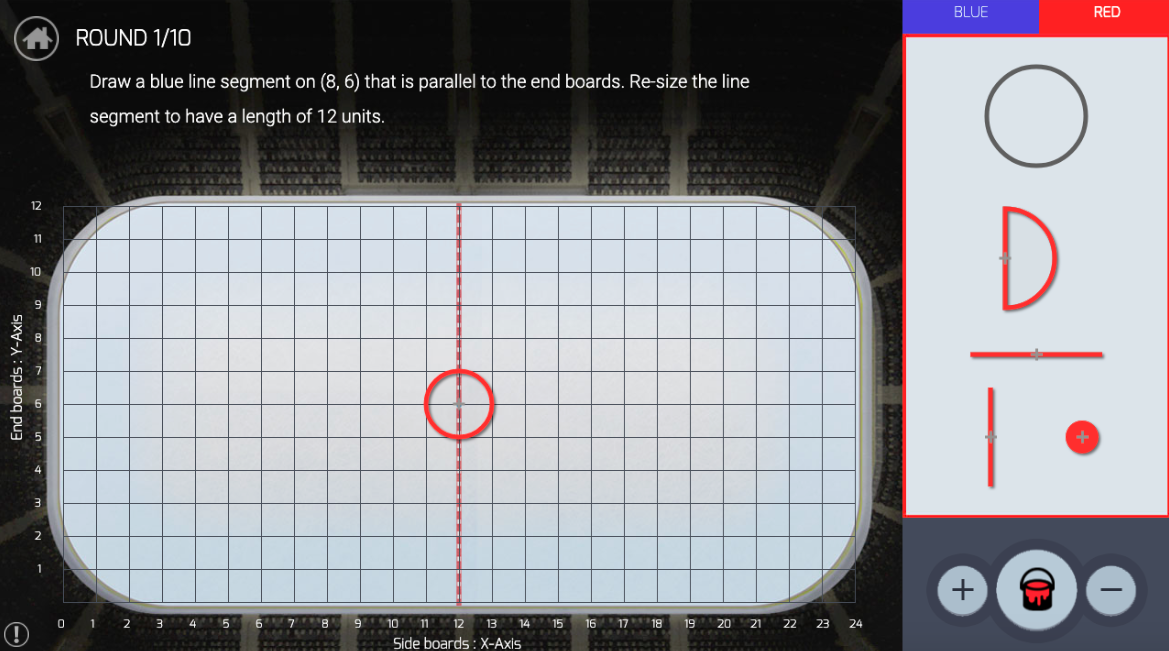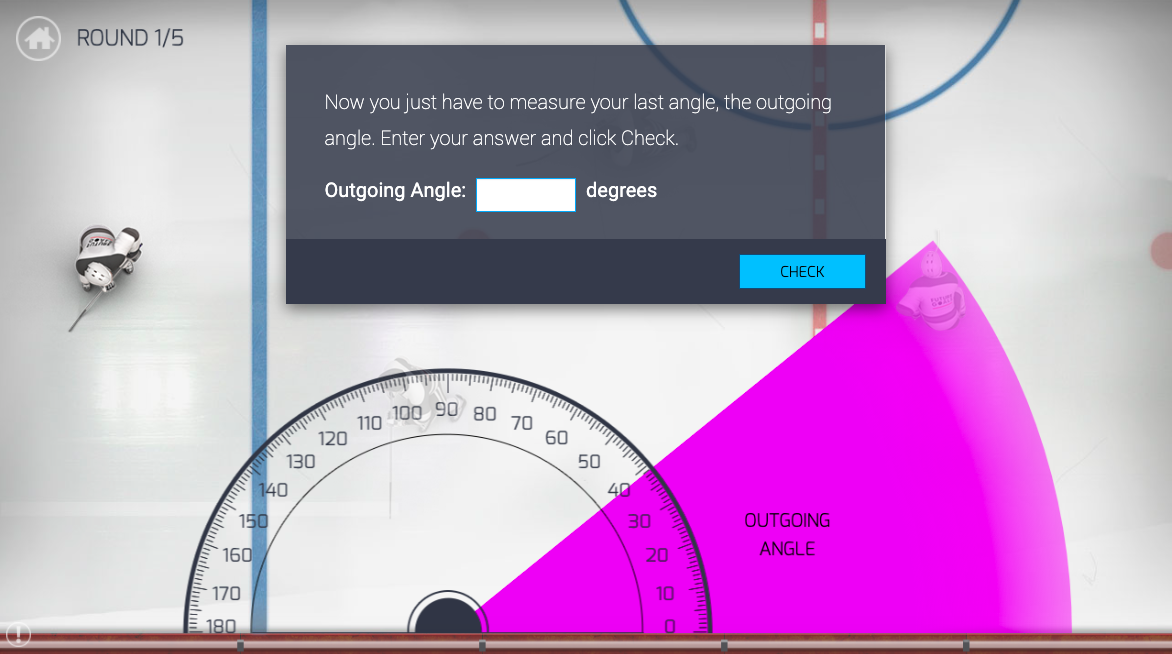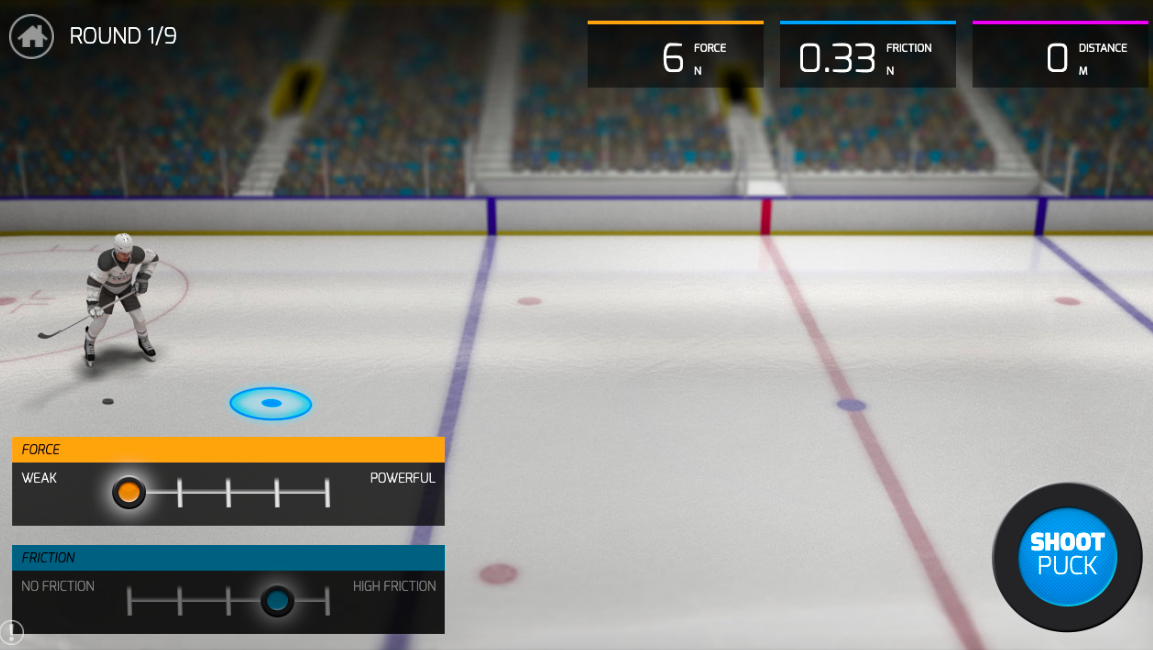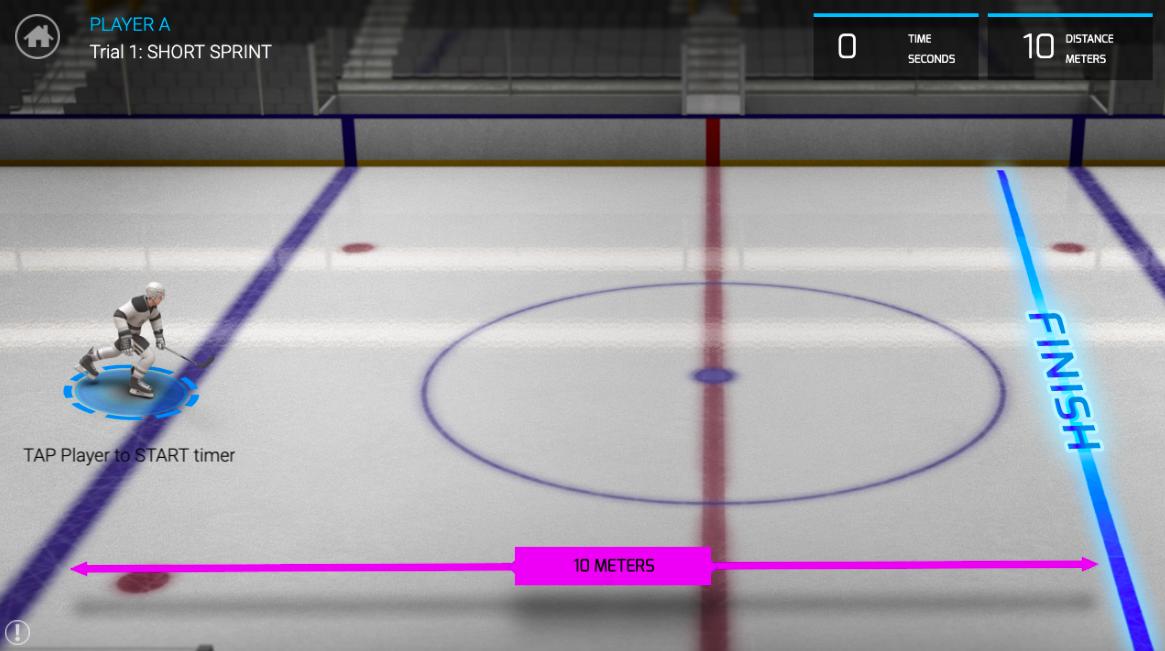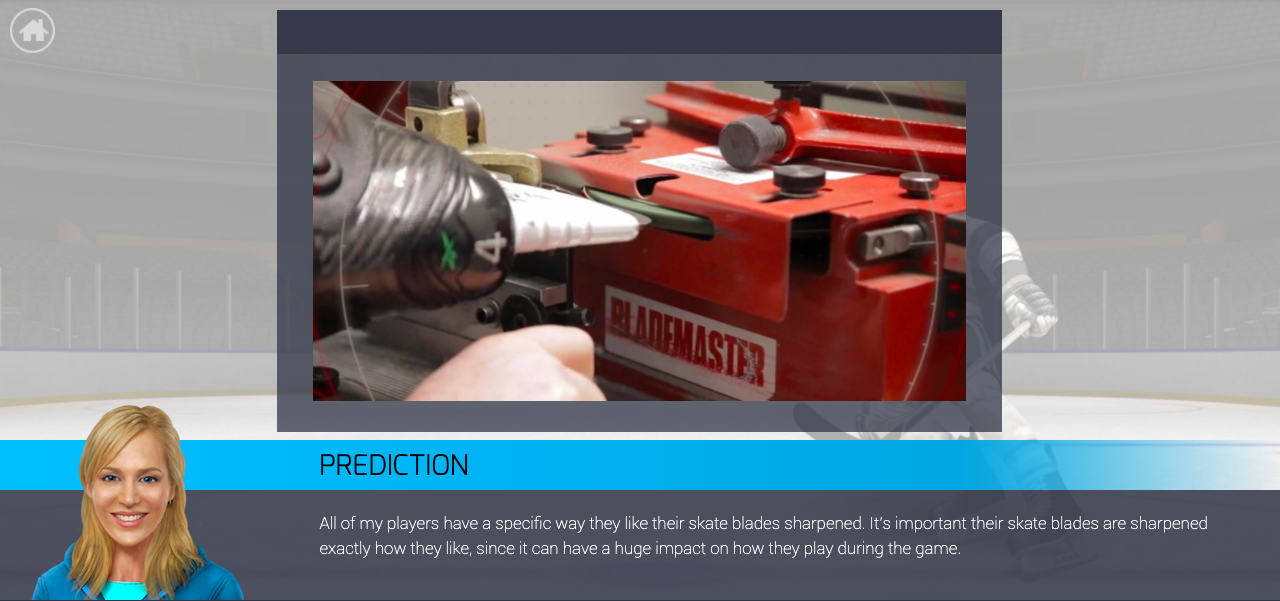About
Future Goals™
Information for Educators and Parents
Sponsored by the NHL and NHLPA, the Future GoalsTM program teaches students key STEM skills using interactive gameplay and real-world scenarios.

Teaching the Principles of STEM Through Hockey
In partnership with EVERFI, the nation’s leading critical skills education platform, the Future Goals Program teaches important skills with a STEM sports curriculum that helps prepare kids for success in life. Using the fast-paced, exciting game of hockey as a STEM learning vehicle, the program helps students understand the real world applications of science and math principles. To learn more about our Future Goals engagement opportunities in your community, click here.
Key Details for Digital Resource
STEM in sports learning objectives include Foundational STEM Concepts, Scientific Thinking, Data/Graphic Analysis, Inquiry, Coordinate Geometry and more.
- Grade Level: 4-7 Best
- Best Fit: Math, STEM, Science
- Number of Lessons:
6 Math lessons, 6 Science - Lessons Time per lesson / Total Duration:
20 minute / 5 Hours - Standards:
Next Generation Science Standards (NGSS) and Math Common Core State Standards, US State Math and Science Standards, and Canadian Provincial Math Standards - Languages:
English, French
Learning Topics
![]() Engineering Behind Equipment
Engineering Behind Equipment
![]() Calculating Ice Surface Area and Volume
Calculating Ice Surface Area and Volume
![]() Circumference, Area of Circles, Radius & Diameter
Circumference, Area of Circles, Radius & Diameter
![]() States of Matter & Phase Changes
States of Matter & Phase Changes
![]() Examination of Mass, Velocity and Kinetic Energy
Examination of Mass, Velocity and Kinetic Energy
![]() Manipulating Variables to Run Experiments
Manipulating Variables to Run Experiments
![]() Data Analysis and Drawing Conclusions
Data Analysis and Drawing Conclusions
Preview the Course
Science Lesson 1: Prepare the Surface
Students help to create the perfect ice surface for the upcoming game. With a molecular view of the ice surface, students explore the impact of different air and ice temperatures on the ice conditions. Students learn about the different states of matter and how the temperature changes will affect skating and the motion of the…
Science Lesson 2: The Face-Off
Students help their team maximize their face-off percentages by ensuring the perfect puck drop for their player. They must select the best puck drop height for each player to ensure the puck reaches the ideal range of kinetic energy before hitting the ground.
Science Lesson 3: Strength
Students are tasked with building their players’ leg strength to help with their speed on the ice. No two skaters are alike, so students need to train each player in their target zone to make the training effective. Students adjust the mass or the speed of each player to reach each individual’s target training zone.
Science Lesson 4: Endurance
Students help the skating coach closely monitor players’ vitals during each shift to ensure they are training in the most effective zone. Students help players meet heart rate and breathing rate target zones during a 30-second shift on the ice and see how physical exertion can impact these factors.
Science Lesson 5: The Stick
Students are tasked with designing the perfect stick given a player’s individual preferences. Students explore the variables of stick design (flex, lie, and curve) and apply this knowledge to a player’s design criteria.
Science Lesson 6: The Goalie Pads
Students test different materials and shapes for the goalie’s leg pads and determine which combinations provide maximal protection and maneuverability.
Math Lesson 1: Uncover the Ice
To remove each individual section of the ice covering, students must first determine the area of the section to be removed. When the ice has been fully revealed, students can use the collected information to determine the area of the rink itself.
Math Lesson 2: Paint the Ice
Before the next game begins, students are tasked with following the mathematical instructions step-by-step to draw the lines correctly on the rink and form the correct geometric constructions.
Math Lesson 3: The Pass
Students learn how to utilize angles to pass the puck around their opponents. In an effort to complete the play successfully, students must find and measure the correct angle for their bank pass, which causes the puck to bounce off the boards.
Math Lesson 4: The Shot
Students are tasked with hitting the puck across the ice such that it will stop at a specific spot. However, the friction of the ice changes depending on how fresh and how cold the ice is, and therefore, students must adjust their shot force and the friction of the ice to successfully land the puck…
Math Lesson 5: Speed
During a game, most races toward a loose puck are won or lost in the first strides. To help prepare for the next game, students run drills to time players and analyze their speed over short and long distances. Once each sprint is complete, students determine the average speed by calculating distance over time.
Math Lesson 6: The Skate Blades
Students learn the effect of the a skate’s blade hollow on stopping distance. Students test players’ stopping distances with different radius of hollow values and analyze the impact on stopping performance.
IMPACT
Inspiring Millions of Students Since 2014
Since 2014, the NHL, NHLPA and EVERFI have teamed together to bring STEM education through Future Goals - Hockey Scholar into classrooms throughout Canada and the United States.
Pittsburgh Penguins
Arizona Coyotes
New Jersey Devils
Florida Panthers
World Cup Hockey - 2016
Chicago Blackhawks
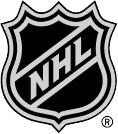
NHL - The National Hockey League (NHL®), founded in 1917, consists of 32 Member Clubs, each reflecting the League’s international makeup with players from more than 20 countries represented on team rosters, vying for the most cherished and historic trophy in professional sports – the Stanley Cup®. The NHL is committed to building healthy and vibrant communities through the sport of hockey by increasing youth participation and engagement; fostering positive family experiences; promoting inclusion, positive culture and leadership; and supporting sustainable community impact.
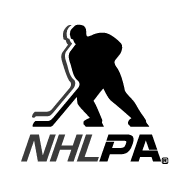
NHLPA - The National Hockey League Players' Association (NHLPA), established in 1967, is a labour organization whose members are the players in the National Hockey League (NHL). The NHLPA works on behalf of the players in varied disciplines such as labour relations, product licensing, marketing, international hockey and community relations, all in furtherance of its efforts to promote its members and the game of hockey. For more information on the NHLPA, please visit www.nhlpa.com.
EVERFI - To us, digital learning isn’t just about realizing your potential — it’s about maximizing it. With our scalable learning solutions, we’re empowering organizations everywhere to instill knowledge around critical topics in the classroom, in the office and in the community. Together, we’re connecting education to the real world and opening new doors of opportunity for all.
Stay Connected.
Sign up to receive news and offers from the NHL and its Member Clubs.

